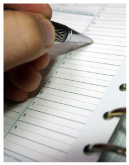 |
|
 |

Standards-Based Afterschool Activities We often talk about having high standards for students. If you are working to boost student achievement, make sure you include state academic standards. A recent study of high- quality afterschool programs found that all of the programs studied incorporated state or national standards into their curriculum.* Does your afterschool or expanded learning program align activities with academic Get help developing standards-based activities. If instructors in your afterschool Show instructors what standards-based activities look like. If you have certified Help staff learn standards. Although the study of high-quality afterschool programs found that sites aligned activities with standards, a number of program staff reported they had little direct knowledge of state standards. This was more common in programs where instructors had little or no formal educational training. When asked questions that included a standard, however, virtually all staff members described in detail how they tied activities to that standard. You can help instructors become more familiar with standards and find ways to align lessons with them. Talk to a curriculum specialist at the district office or a school you serve to learn more about appropriate standards, or visit a standards clearing-house like edstandards.org. (link no longer working as of 1/2012) * Jordan, C., Parker, J., Donnelly, D., Rudo, Z. (Eds.). (in press). A practitioner’s guide: Building and managing quality afterschool programs. Austin, TX: SEDL. |
The SEDL National Center for Quality Afterschool helps state education agencies and local practitioners develop high-quality programs for academic enrichment as well as youth development activities. |

| 
AFTERSCHOOL LESSON PLAN DATABASE
This resource contains more than 100 lessons that engage students and enrich learning—and they were created by afterschool practitioners like you. Browse the lessons or submit one of your own. |

Planning Lessons
|
What to do. Think about the progression of the activity from start to finish. Basic steps should include a “hook” to get students’ attention, presentation of the content, modeling the activity for students, and checking for understanding. Outcomes to look for. How will you know that students learned what you intended them to learn through this activity? What, if any product will they produce? Self-evaluation. After you’ve conducted the activity, reflect on how the lesson went. Were there things that you wished you had done differently? Would you do this activity again? |
 |
 |
||||
|
|
|
This e-mail was sent by: Editor: Laura Shankland
|
You are welcome to reproduce issues of AfterWords and distribute copies at no cost to recipients. Please credit SEDL as publisher. Link to PDF versions of AfterWords is available here. For additional uses, please fill out and submit a copyright request form. Copyright © 2009 by SEDL. |



